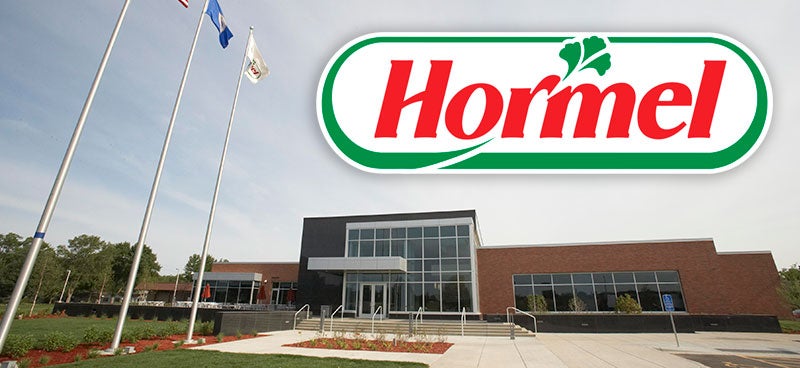High nitrate levels in southeastern Minnesota prompt aid plan at state Capitol
Published 5:50 pm Tuesday, April 2, 2024
|
Getting your Trinity Audio player ready...
|
By Clay Masters
MPR News/90.1 FM
The cold wind blows through some trees on the edge of a farm field just outside the small town of Fountain, the self-proclaimed “Sinkhole Capital of the U.S.” situated between Rochester and the Iowa border.
Farmer Martin Larsen of nearby Byron wears many hats, including Olmsted County conservation technician and caver.
On a recent, gusty afternoon, he moved back a tarp hanging over a circular metal entrance to an 85-feet deep underground cave — his natural laboratory for investigating levels of water contaminants that seep below the surface.
This part of Minnesota is known for its Swiss-cheese-like karst topography. The fractured limestone allows ground and surface water to travel quickly and Larsen has been into these caves throughout the region to take samples of water that drips down.
“Which is the water that’s left the row crop rooting zone, moved through the remaining soil, down through the bedrock — the porous bedrock, the karst bedrock — into the cave,” Larsen said.
The water travels quickly here. One of Larsen’s tests is for nitrate, which is formed when nitrogen mixes with oxygen in water. It’s colorless, odorless and tasteless. It can easily go undetected if water isn’t tested. That’s especially true in old wells installed prior to current codes.
Nitrogen is a common component of commercial fertilizer and animal manure used on cropland and can leach into the groundwater. Larsen has found nitrate levels well above the drinking water standards of 10 milligrams per liter.
“This is as close as we can get to being inside of a well as possible,” Larsen said. “We can measure the correlation of land use and the good things that we can do, reduce nitrates on the landscape and how long it takes to measure it down at well depth.”
Nitrate contamination has been a known problem throughout much of Minnesota for decades, but increased awareness has sparked an urgent interest in addressing the problem.
The work Larsen and others are doing in southeast Minnesota is being watched closely by decision makers at the state Capitol, where nitrate remediation plans are among relatively few new spending items that are on track to clear the Legislature this year.
Gov. Tim Walz and lawmakers could designate millions of dollars of grants and other allowances to help counter concerns over nitrate levels in this part of the state.
Larsen plants oats on his farm; as well as cover crops on his corn and soybeans so there are root systems locking more of the organic matter in the soil year-round and preventing nitrates from sinking deep beneath the ground in the quickly traveling water underground.
There is a lot of interest from farmers and community members, especially after the federal Environmental Protection Agency declared state agencies needed to take additional steps to protect drinking water in southeast Minnesota from nitrate contamination.
The Community Center in downtown Fountain was packed last week for a meeting with representatives from various state agencies.
“Testing your private well can get kind of expensive and nitrate tends to be one of the cheaper tests you can have done,” said Minnesota Department of Health Strategic Initiatives Coordinator Frieda von Qualen. “So if nitrate is detected in a well, especially if it’s three parts per million or higher there is a higher likelihood that there will be pesticides or herbicides in that water as well.”
Drinking water with high nitrate levels poses a health risk to humans, especially infants.
More recent research also has linked nitrate exposure to health effects for adults, including colorectal cancer and thyroid disease.
Walz has proposed more than $4 million in his supplemental budget to provide assistance or, in some cases, fully pay for some type of mitigation. That could include everything from installing a home reverse osmosis system to as far as drilling a new well. Walz recommended about $13 million for nitrate response overall.
Lawmakers on key committees also consider the nitrate issue part of the must-do-list for the session.
There have been various proposals introduced. One would try to increase the number of farmers participating in a voluntary program to have them commit to best practices to protect water through tax incentives.
A bill from Rep. Steven Jacob, R-Altura, would make it so landowners would receive a $5-per-acre property tax credit for land certified by the Minnesota Agricultural Water Quality Certification Project. House Environment Committee Chair Rick Hansen, DFL-South St. Paul, introduced legislation earlier this year that would raise fertilizer fees to help pay the cost.
Carrie Jennings is a geologist and Research and Policy Director with the Freshwater Society. She said addressing nitrate levels in southeastern Minnesota is critical and an immediate issue.
“[But] that does not reduce the loading of nitrogen at the surface,” Jennings said. “We would like to see efforts go beyond that to reduce the nitrogen load, especially in places where we know the aquifers are very vulnerable.”
Some area farmers have voiced frustration over implications that they’re at fault and skepticism has come from other quarters about the state’s approach here.
As a headwater state, Jennings said Minnesota has an obligation to be a leader in the corn belt when it comes to water quality. Those involved agree fixing the issue will extend beyond the possible funding awaiting approval in St. Paul.
In the meantime, Larsen plans to keep up his part in addressing the nitrate issue on his farmland.
“On average, a farm like mine will be under the drinking water standard quite a bit,” Larsen said. “Where in the past, I was quite a lot over because I was corn and soybeans strong and unprotected without any cover crops prior to this change in my farming practices.”





